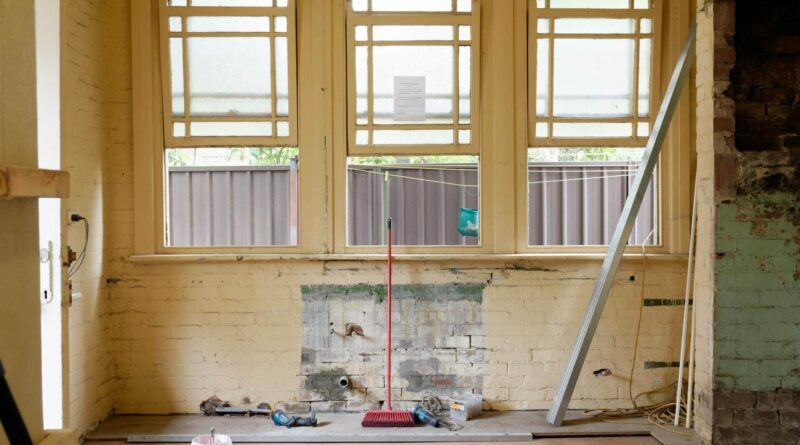3 Common Causes of Foundation Failure and How to Prevent
AUTHOR BIO:
Melanie is the owner of Creo Home Buyers, a house flipping company that buys houses in Maryland and surrounding areas. In her spare time she likes to dabble in SEO and write for various blogs and websites. She has been featured in NBC News, ForSaleByOwner.com, Realtor.com, Apartment Therapy, and other major platforms, Melanie is not just renovating houses—she’s redefining success on her own terms. Join her in turning houses into homes and breaking free from the ordinary.
According to Forbes, foundation repairs cost homeowners nearly $6,000 on average. However, more extensive repairs can costs tens of thousands of dollars for more extensive damage.
By understanding the common causes of foundation problems, you’ll be better equipped to prevent these types of failure and protect the safety of your home.
In this article, we explore the top three most common causes of foundation failure and tips to prevent them.
3 Common Reasons of Foundation Failure
Foundation failure is a serious issue that can have a significant impact on the structural integrity and safety of your home. Being aware of the common causes of foundation failure can help you take steps to maintain a strong and stable foundation for years to come.
1. Poor Soil Compaction and Erosion
One key factor contributing to foundation failure is poor soil compaction and erosion.
Certain soils, such as clay soil, expand when wet and shrink when dry. If the soil around your foundation expands and contracts dramatically in this way, you may find you have foundation issues.
When the soil beneath your foundation is not properly compacted, it can lead to uneven settling of the foundation, creating stress and strain on the structure. Over time, this can lead to cracks in the foundation walls, uneven floors, and even structural instability.
Additionally, if the soil around your home erodes away from the foundation, you may find less support and further water issues around the foundation.
HOW TO PREVENT: Prioritize proper water drainage away from your home with gutters and downspouts directed away from your home. You may also wish to consult with foundation experts on how to best address the type of soil surrounding your home to prevent problems in the future.
2. Poor Drainage May Cause Leaks
Excessive moisture from poor drainage poses a significant threat to the stability and integrity of your home’s foundation.
When moisture levels around a foundation become excessively high it can lead to water penetrating your walls. This leads to cracks and potential structural issues over time.
In addition, the presence of excessive moisture can also attract pests, such as termites, which can further compromise your home’s structural integrity.
HOW TO PREVENT: To mitigate these risks, it is crucial to implement effective drainage systems with gutters and drain spouts diverting water away from your foundation. Additionally, maintaining proper grading and addressing any water leakage issues promptly can help protect your foundation from erosion damage.
3. Untamed Tree Roots Damage Foundations
Tree roots can pose another significant threat to the stability and integrity of foundations. As trees grow, their roots naturally extend outward in search of water and nutrients.
Unfortunately, this search can lead them towards the closest water source, which can be the moisture present in the soil surrounding a foundation. As the roots grow and expand, they can exert pressure on the foundation walls, causing them to crack or shift.
Additionally, tree roots have the potential to absorb a significant amount of moisture from the soil leading to soil shrinkage beneath the foundation causing additional issues.
HOW TO PREVENT: Be aware of the proximity of trees near the foundation of your property and take proactive measures such as regular pruning or installing root barriers to prevent potential damage. You may also need to remove old stumps and tree roots near your home to prevent water from pooling around them.
Common Signs of Foundation Issues
Recognizing the signs of foundation problems is crucial for early detection and prompt repair. Common indicators include cracks in the foundation, foundation settlement, and issues with the plumbing system.
- Cracks in Walls or Floors: Check for visible cracks, especially diagonal or stair-step cracks in the walls or foundation. Vertical or horizontal cracks around a door or window are usually less worrisome but you may wish to have them checked out to be sure.
- Doors and Windows Misalignment: Difficulty in opening or closing doors and windows may signal foundation movement. Though your doors and windows may stick for other reasons, it’s worth investigating to find the cause.
- Uneven or Sagging Floors: Noticeable sloping or sagging floors may indicate shifting foundations, compromising the stability of the entire structure.
- Moisture on Walls: If you see evidence of moisture on your walls, particularly your basement walls, then you should get that checked out. Unaddressed water penetration can lead to dangerous mold growth and foundation failure over time.
- Mold on Baseboards: Check for mold at the bottom of walls and around your baseboards of a finished basement. If you come across the sight or smell of mold in your basement, you may have foundation issues.
- Cracks in Exterior Bricks: Exterior brick walls with cracks can be a sign of foundation stress. Some cracks are merely cosmetic and can be easily patched, but if they return or get larger, have them checked out by a professional.
- Bowing or Leaning Walls: Walls that are tilting or bowing are usually a sign of significant foundation or structural issues. These should be checked out immediately to ensure everyone’s safety.
What to Do With a House That Has Foundation Issues?
When dealing with potential foundation issues, the first smart move is to consult with a professional. Early detection and addressing the root cause can save time, money, and potentially prevent further damage.
If you suspect foundation issues, consider reaching out to your home insurance provider to see if your policy covers the damaged foundation you’ve discovered.
However, if your home needs extensive foundation repairs that you don’t want to or can’t take on, consider selling your house for cash AS-IS to a reputable home buyer or listing it on the open market. Professionals who buy houses as-is can be a hassle-free way to sell a house with foundation concerns.
Whether it’s consulting with professionals, exploring insurance coverage, or considering alternative solutions like selling as-is, taking proactive steps ensures a solid and secure foundation for your property. Don’t hesitate to prioritize the well-being of your home, laying the groundwork for years of structural stability and peace of mind.

